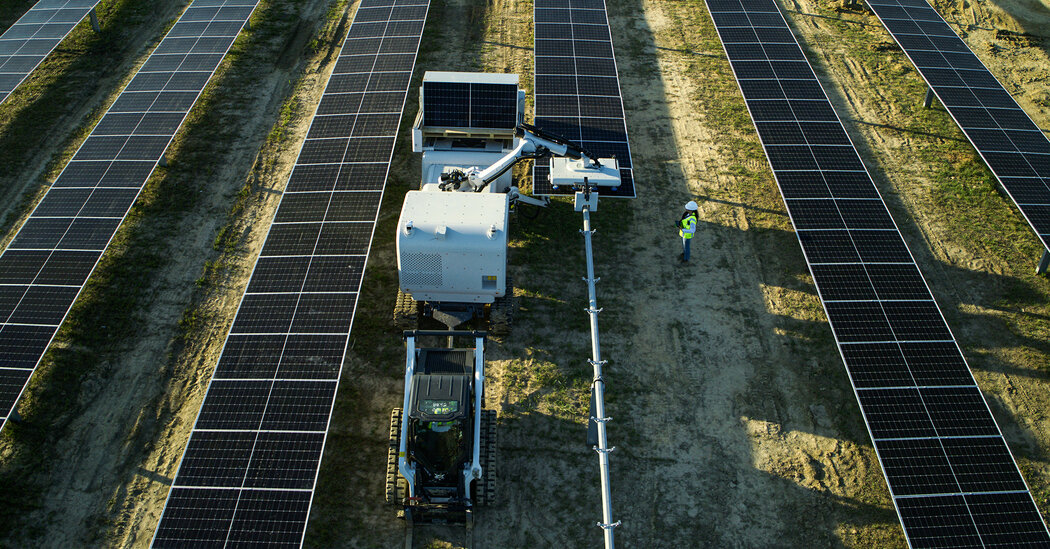Energy companies say a labor shortage is one big obstacle to installing more solar power. They’re turning to machines to speed things up.
The companies racing to build large solar farms across the United States are facing a growing problem: Not enough workers.
Now, they’re turning to robots for help.
On Tuesday, AES Corporation, one of the country’s biggest renewable energy companies, introduced a first-of-its-kind robot that can lug around and install the thousands of heavy panels that typically make up a large solar array. AES said its robot, nicknamed Maximo, would ultimately be able to install solar panels twice as fast as humans can and at half the cost.
Roughly the size of a pickup truck, Maximo has a large extendable arm that uses suction cups to pick up solar panels one by one and lay them neatly into rows, using artificial intelligence and computer vision to position them properly.
After months of testing, AES will put Maximo to work in the California desert later this year to help install panels at the largest solar-plus-battery project under construction, meant to power Amazon data centers. If all goes well, the company aims to build hundreds of similar A.I.-powered robots.
It’s part of a growing trend: Energy companies want to use automation to overcome worker shortages, cut costs and speed up the construction of large solar farms, which has traditionally been very labor-intensive. Without drastic changes, these companies say, it will be impossible to deploy solar power fast enough to tackle global warming and meet the country’s rapidly growing need for electricity.
“We’re seeing labor shortages on construction projects in the United States, and it’s a bottleneck to the build-out of solar farms,” said Andrés Gluski, chief executive of AES, in an interview. “So how do you get around it? Well, robots can work 24 hours, right? Robots can pick up 80-pound solar panels, not a problem.”
